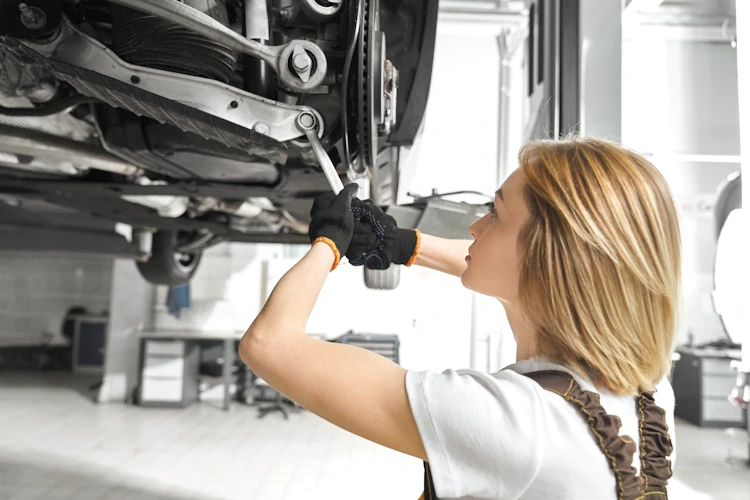In the ever-evolving world of cycling, technology has become an integral part of the riding experience. Among the myriad of innovations, Garmin bike computers stand out as one of the most influential tools for cyclists of all levels. These devices have revolutionized cycling dynamics, providing riders with a wealth of features to enhance their performance, navigation, safety, and overall enjoyment of the sport. In this article, we’ll delve into the evolution of garmin bike computer and explore how they are shaping the future of cycling.
Understanding Garmin Bike Computers
Garmin bike computers are sophisticated devices designed to provide cyclists with real-time data and insights into their rides. From tracking performance metrics like speed, distance, and cadence to offering navigation guidance and safety features, Garmin bike computers offer a comprehensive suite of functionalities to meet the needs of cyclists.
Enhancing Performance Tracking
One of the primary functions of Garmin bike computers is performance tracking. These devices accurately capture and display essential metrics such as speed, distance traveled, cadence (pedal revolutions per minute), and heart rate (with compatible sensors). By monitoring these metrics in real-time, cyclists can assess their performance, track improvements over time, and set goals to push their limits further.
Navigation and Route Planning
Garmin bike computers also serve as powerful navigation tools, thanks to their built-in GPS capabilities and detailed mapping features. Cyclists can plan routes, explore new roads and trails, and receive turn-by-turn directions directly on their device’s screen. Whether embarking on a long-distance tour or navigating through urban streets, Garmin bike computers provide cyclists with the confidence to explore unfamiliar terrain with ease.
Connectivity and Integration
Connectivity is another hallmark of Garmin bike computers, allowing cyclists to seamlessly integrate their devices with smartphones, fitness apps, and other compatible accessories. Through Bluetooth and ANT+ technology, Garmin bike computers can sync ride data to online platforms like Garmin Connect or popular fitness apps such as Strava. This connectivity enables riders to analyze their performance, share achievements with friends, and participate in virtual challenges and competitions.

Training and Coaching Tools
Garmin bike computers are not just passive tracking devices; they also offer a range of training and coaching tools to help cyclists improve their performance. These tools may include preloaded workout plans, virtual training partners, performance analytics, and even on-screen prompts to guide riders through interval workouts or structured training sessions. By leveraging these features, cyclists can tailor their training regimen to their specific goals and fitness levels.
Safety Features
Safety is paramount for cyclists, and Garmin bike computers offer several features designed to enhance rider safety on the road. One such feature is incident detection, which automatically alerts designated contacts in the event of a crash or other emergency. Additionally, Garmin bike computers may offer live tracking capabilities, allowing friends and family to monitor a cyclist’s location in real-time during rides. These safety features provide cyclists with added peace of mind, especially when riding alone or in unfamiliar areas.
Case Studies and Success Stories
To illustrate the impact of Garmin bike computers on cycling dynamics, consider real-life case studies and success stories from cyclists who have benefited from using these devices. These anecdotes can highlight specific instances where Garmin technology has helped riders achieve their goals, overcome challenges, or simply enjoy a better riding experience. Whether it’s conquering a challenging climb, navigating through a bustling city, or setting a personal record, Garmin bike computers have played a pivotal role in countless cycling achievements.
Future Trends and Innovations
As technology continues to advance, so too will Garmin bike computers. Looking ahead, we can expect to see continued innovation in areas such as performance tracking, navigation, connectivity, and safety. Future Garmin bike computers may incorporate advanced features like artificial intelligence, predictive analytics, and augmented reality to further enhance the cycling experience. By staying at the forefront of technology and listening to the needs of cyclists, Garmin is poised to lead the way in shaping the future of cycling dynamics.
Garmin bike computers have revolutionized cycling dynamics by providing riders with advanced tools and features to enhance their performance, navigation, safety, and overall enjoyment of the sport. From tracking performance metrics and planning routes to staying connected and ensuring rider safety, Garmin bike computers offer a comprehensive solution for cyclists of all levels. As technology continues to evolve, we can expect Garmin to remain at the forefront of innovation, shaping the future of cycling for years to come. So, whether you’re a seasoned pro or a recreational rider, consider incorporating a Garmin bike computer into your cycling arsenal and revolutionize your ride today.
FAQ (Frequently Asked Questions)
Q: Can Garmin bike computers track my heart rate?
A: Yes, many Garmin bike computers are compatible with heart rate monitors, allowing you to track your heart rate during rides.
Q: Are Garmin bike computers waterproof?
A: Most Garmin bike computers are designed to be waterproof or water-resistant, allowing them to withstand rain and splashes.
Q: Can I use Garmin bike computers for mountain biking?
A: Yes, many Garmin bike computers offer features specifically designed for mountain biking, such as trail mapping and mountain-specific performance metrics.
Q: How long does the battery last on Garmin bike computers?
A: Battery life varies depending on the model and usage, but most Garmin bike computers offer several hours of battery life on a single charge.
Q: Can I customize the data fields on Garmin bike computers?
A: Yes, Garmin bike computers allow you to customize the data fields displayed on the screen, so you can track the metrics most important to you during your ride.
